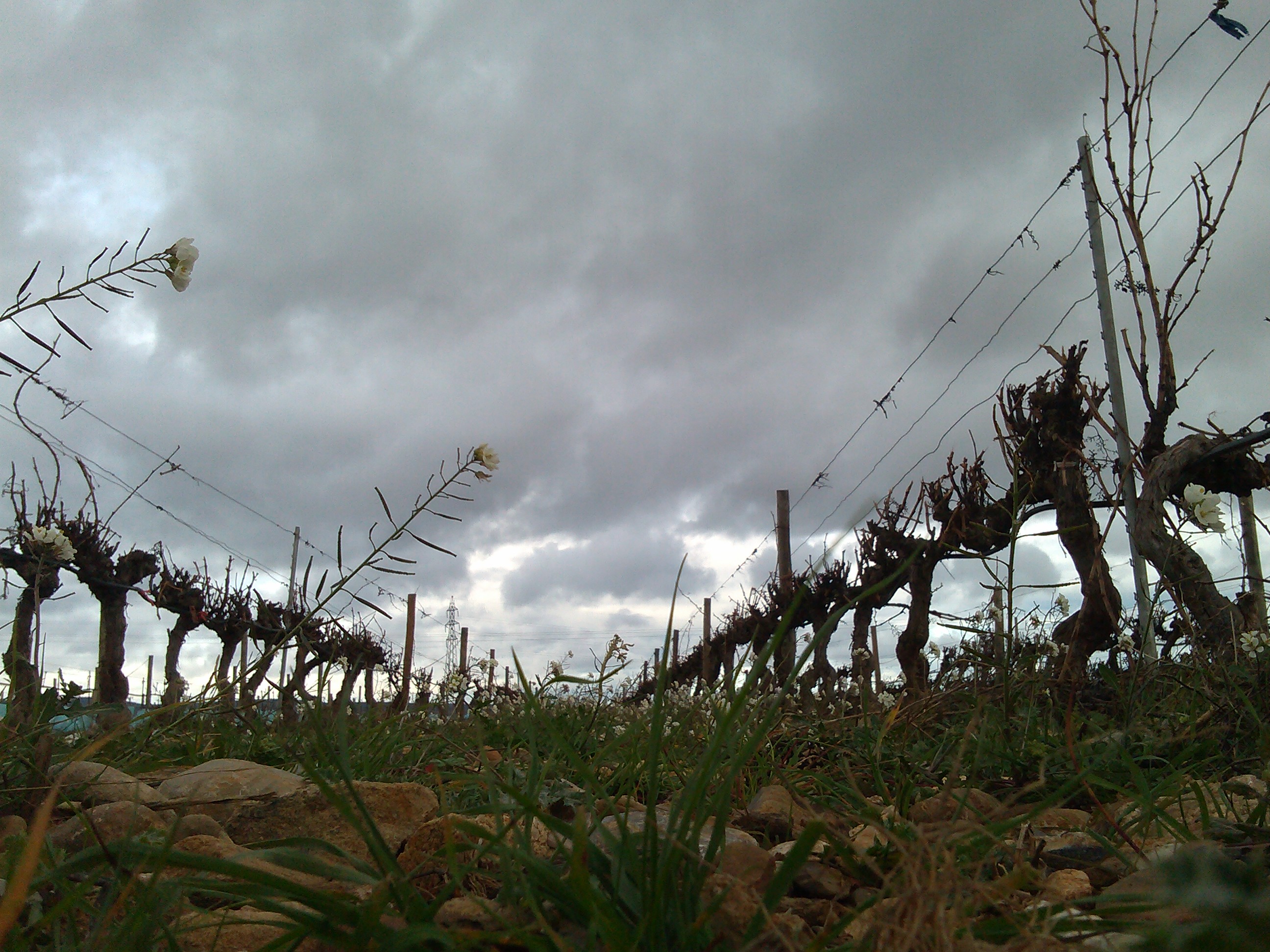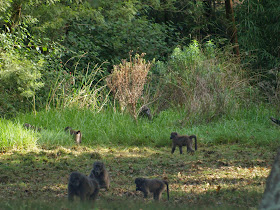Virgile struck me as a genuine man, devoid of all pretension.
He listens closely before speaking, and when he does speak his words are rich
with meaning. I liked his wines, too, especially his Saturne, a red blend from
the Saint-Saturnin area of
the Languedoc.
I let my thoughts about the Languedoc simmer for a few
months before I picked up this book and relived my experiences through Patrick
Moon’s language. This book was originally published in 2003, but a new edition came out last year, which includes an 10-year retrospective epilogue.
Moon hails from England, but he spent a year-long sabbatical in an old Languedoc home that he inherited. The premise of his book is quite simple: Moon roams the Languedoc from January to December, and each month is shaped into a chapter. As the title suggests, Moon follows Joly around his vineyard and tries to learn as much as he can about vinegrowing, winemaking and the local oenological peculiarities. He prunes vines, picks grapes and, of course, drinks a lot of Languedoc vino.
Moon hails from England, but he spent a year-long sabbatical in an old Languedoc home that he inherited. The premise of his book is quite simple: Moon roams the Languedoc from January to December, and each month is shaped into a chapter. As the title suggests, Moon follows Joly around his vineyard and tries to learn as much as he can about vinegrowing, winemaking and the local oenological peculiarities. He prunes vines, picks grapes and, of course, drinks a lot of Languedoc vino.
Moon’s vocabulary is undeniably British. His diction is highly
elevated and his language is flowery and effusive. When surrounded by bottles
of wine and awe-inspiring vineyards, writers (myself included) are prone to
getting carried away, and Moon gets carried away quite often.
But there’s something very pleasant about getting lost in
Moon’s overflowing banter: “The vines were, of course, completely bare at this
time of year — some neatly pruned, others still a ragged tangle — but the
delicate, silvery grey foliage of the olive trees gently counterpointed the
starkness of the rugged, fir-clad hills immediately behind me to the north.”
The book is quite informative for those interested in
learning more about the entire vineyard-to-glass process. Moon shares what he
learns as he learns it, which is helpful when talking about vineyard management
methods, sugar and acid levels and fermentation chemisty.
Moon spends many pages reflecting on the farm-to-table way
of life in the Languedoc: “Where vegetables in England might advertise their
country of origin, here I find baskets that cite specific villages, even farms,
in their pedigrees. Only the oranges come from as far afield as Spain. My naïve
request for basil is simply laughed at. If it isn’t seasonal, it isn’t here.”
 |
| January clouds roll over a vineyard near the Languedoc town of Calce, France. |
One of his guides, Krystina, is full of information about
the Languedoc’s important role in the world’s history of wine. Here’s Krystina
on the Greek connection with the Languedoc: “Wine proved a great success with
the locals, you see. And very soon the Greeks were planting the Languedoc’s
first cultivated vines and making the first local wines. Same with the olive
trees, because olive oil wasn’t just the cornerstone of their cuisine, they
also needed it for lighting, medicine, important religious observances, you
name it. Absolutely vital.”
For millennia, hardworking men and women have cultivated
vines and crushed berries in this rocky, sun-drenched terrain. But,
unfortunately, the region’s reputation suffered as many producers churned out
lots of bland juice for the bulk market. “The region was making forty-four
percent of the country’s wine from only twenty-three percent of its vineyard
area,” Krystina tells Moon. “It was selling on price not quality.”
Luckily for winemakers and consumers, the idea that the
Languedoc is home only to mass-produced plonk doesn’t hold up anymore. Sure you
can still find insipid wines, but more and more producers — like Virgile Joly —
are producing exciting, terroir-driven wines that deserve your attention.
If you’re a lover of wine, travel, food and Southern France,
this book also deserves attention.
Click here for a GoPro video edit from my Languedoc travels.
Click here for a GoPro video edit from my Languedoc travels.














